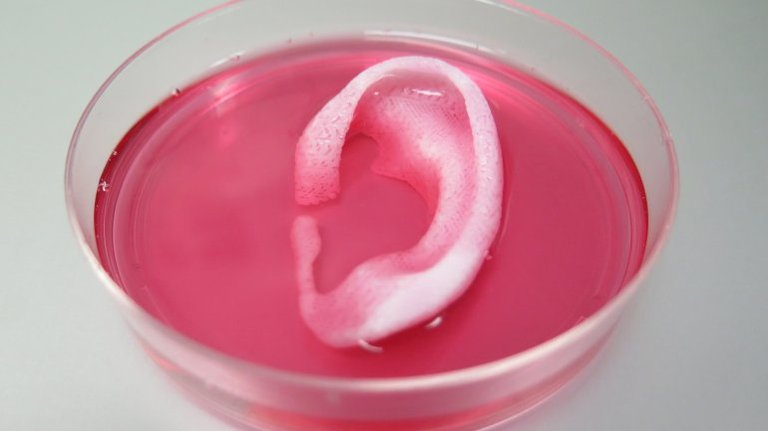They manage to create bones, cartilage and human muscles with a 3D printer

A new 3D printer has created a human ear and a matrallero, structuring its muscles, cartilage and living bones. They are not yet in a position to be transplanted, but they have overcome some of the greatest difficulties that until now had the impression of human organs.
The study was presented by the journal Nature Biotechnology of this week. Until now they have printed and transplanted structures that imitated human organs with polymers, but always made of polymers. This new research has now become its main challenge in the printing of human living organs.
The bioengineers had already tried a lot, but were far from getting really functional organs and tissues: 3D printers generated unstable and fragile structures. In addition, because they were unable to form blood vessels in biostructures made with 3D printers, they had a large size limit on any of the organs they wanted to create: the diffusion distance of food and oxygen. That is, structures of up to 0.2 millimeters could be created.
The researchers of this new research have found the solution to these two problems: they have printed cells on a biodegradable polymer, which will resist with sufficient firmness until the tissues arrive and then will be destroyed on their own. On the other hand, they have also faced the size limit by printing cells in microchannels, which have allowed oxygen and food to have paths that allow them to reach any cell.
The printed structures have been implanted in rats and the results have been satisfactory, achieving the maturation and stabilization of the tissues and also developing the blood vessels.
According to the researchers, it is necessary to develop this technology, but they see the possibility of printing organs that can be used in the surgical implant, since the printing can print creating a three-dimensional computer model of the lost tissue.
Buletina
Bidali zure helbide elektronikoa eta jaso asteroko buletina zure sarrera-ontzian











